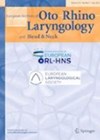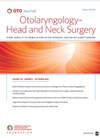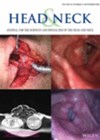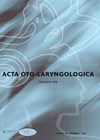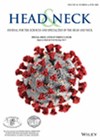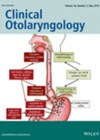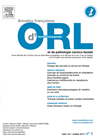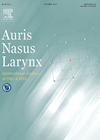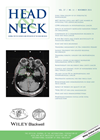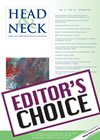
Journal Reviews
Post-total laryngectomy constipation
This cross-sectional study investigated the prevalence of chronic constipation post total laryngectomy (TL) and after total pharyngolaryngectomy (TPL). For the study, the authors used a self-completed patient questionnaire to evaluate the prevalence and factors related to it. Patients using opioids,...
A therapeutic algorithm for tracheoesophageal periprosthetic leakage
Tracheoesophageal voice prosthesis leakage can be intravalvular (more common) or periprosthetic (focus of this study). The authors studied the causes of periprosthetic leakage among 115 patients attending for voice prosthesis management (1374 clinic attendances) treated between December 2014 to December...
Predicting the need for salvage laryngectomy
The treatment of laryngeal cancer has seen a shift towards organ preservation strategies with non-surgical treatment offering equivalent survival outcomes. Nonetheless, salvage total laryngectomy (SLT) remains an important curative management option in cases of treatment failure or recurrence. The authors...
Does use of pectoralis muscle myocutaneous flap (PMMCF) reduce postoperative pharyngocutaneous fistula complication after salvage laryngectomy?
Salvage laryngectomy for recurrent laryngeal carcinoma following failed radiotherapy or chemoradiotherapy is associated with high postoperative complication rate. The primary aim of this paper was to assess whether use of muscle myocutaneous flap (PMMCF) as an interposition graft reduces the...
Patient reported outcomes following total laryngectomy using the Swallowing Outcomes After Laryngectomy (SOAL) questionnaire
Following a total laryngectomy, alterations in the pharyngeal musculature and changes in the pharyngo-oesophageal segment due to reconstruction, results in altered bolus transit. Swallowing dysfunction after total laryngectomy for head and neck squamous cell carcinoma can vary from 10%-90%. There...
Are elective neck dissections needed during salvage laryngectomy?
There has recently been a move away from elective neck dissections in the setting of salvage laryngectomy. This has mainly resulted from an appreciation of the increase in morbidity, in particular pharyngocutaneous fistula formation, and an improvement in cross-sectional imaging...
Management of stage IV pharyngolaryngeal lesions
This is a retrospective study of 63 patients presenting with stage four laryngeal and/or hypopharyngeal squamous cell carcinoma. The aim was to define the factors influencing the oncological and functional outcomes of the patients. All patients had T4 lesions with...
Risk factors for post laryngectomy fistula
This is a meta-analysis looking at the postoperative pharyngocutaneous fistula rates following total laryngectomy. The authors ended up with 34 studies with about 2500 patients. The most striking finding was that preoperative radiotherapy was a significant risk factor as well...
Risk factors for pharyngocutaneous fistula after laryngectomy
Pharyngocutaneous or salivary fistula is a feared complication following laryngectomy, causing significant morbidity, prolonged hospital inpatient stay / cost and mortality. Previous radiotherapy / chemoradiotherapy is a well recognised risk factor and leads many surgeons to recommend onlay pectoralis major...
Are organ-preserving treatment strategies for T3 laryngeal cancers reducing patient survival?
This article presents the 10-year results of a single institution’s treatment of advanced laryngeal cancer. The institution established a protocol based on the Dutch Head and Neck Society consensus document on laryngeal cancer diagnostics and treatment published in 1991. This...
Vascularised tissue in salvage total laryngectomy
Chemoradiation (CRT) has become the mainstay for locally advanced laryngeal cancer since the RTOG 91-11 trial. Unfortunately there is still a substantial demand for salvage laryngectomies, which have a higher complication rate, the most notable being pharyngocutaneous fistula (PCF). Several...

